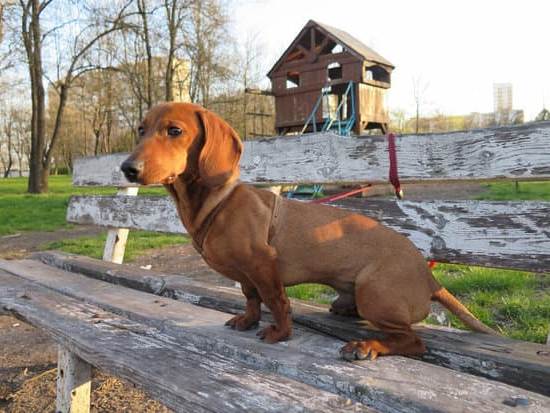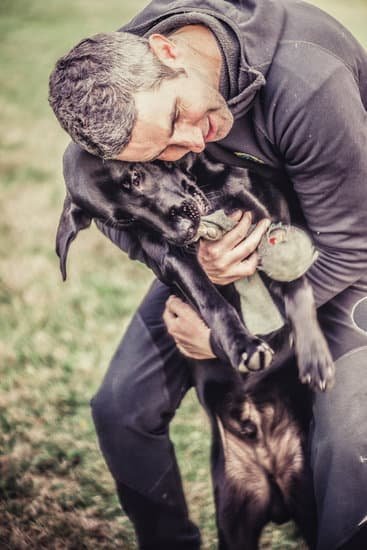Are you interested in learning how to train a dog for pheasant hunting? Pheasant hunting is an exhilarating and challenging sport that requires the assistance of a well-trained hunting dog. In this article, we will explore the crucial role that hunting dogs play in pheasant hunting and provide a comprehensive guide on training techniques, equipment, and safety measures to ensure a successful and rewarding hunting experience.
Pheasant hunting is a popular outdoor activity that offers hunters the thrill of tracking, flushing out, and shooting these elusive birds. However, the key to a successful pheasant hunt lies in having a skilled and obedient hunting dog by your side. A well-trained dog can aid in tracking and retrieving pheasants, significantly increasing your chances of bagging game.
In the following sections, we will delve into the importance of training a hunting dog for pheasant hunting, as well as discuss the selection of the right dog breed for this purpose. We will also cover basic obedience training, advanced techniques such as flushing out and retrieval training, essential equipment and gear, pre-hunt preparations, understanding pheasant behavior and habitats, as well as ensuring the safety and well-being of your hunting dog during expeditions.
The Role of a Hunting Dog in Pheasant Hunting
The role of a well-trained hunting dog in pheasant hunting cannot be overstated. These dogs play a crucial part in the success of any hunting expedition, as they aid in tracking and retrieving pheasants. A skilled hunting dog can make the difference between a successful hunt and coming home empty-handed. Their keen sense of smell, instinctual tracking abilities, and obedience are essential for locating and flushing out pheasants.
The Importance of a Well-Trained Hunting Dog
A well-trained hunting dog is an invaluable asset for any hunter venturing into the field. These animals are not only companions but also working partners during hunts. They possess the natural instincts required for bird hunting, but training is essential to refine these abilities and ensure that they can effectively assist their human counterparts in locating and retrieving pheasants.
How a Hunting Dog Aids in Tracking and Retrieving Pheasants
Hunting dogs are trained to track down birds by following their scent trail. Once the pheasant is flushed out, the dog’s training kicks in as it retrieves the bird after it has been shot. The physical attributes of these dogs are also crucial, as they need to have endurance, agility, and strength to navigate various terrains while on the hunt. With proper training, these canine companions become indispensable assets for hunters seeking a successful pheasant hunt.
Overall, understanding how to train a dog for pheasant hunting is essential to make the most of this unique partnership between humans and animals during hunting expeditions. By carefully selecting the right breed, providing thorough training, and prioritizing safety and well-being, hunters can enjoy rewarding experiences with their trusty hunting companions.
Selecting the Right Dog Breed for Pheasant Hunting
When it comes to pheasant hunting, selecting the right dog breed is crucial for a successful hunt. Not all dog breeds are well-suited for this type of hunting, so it’s important to choose a breed that has the necessary characteristics and abilities. Understanding the best dog breeds for pheasant hunting is essential for hunters who want to train their canine companions for this type of activity.
Identifying the Best Dog Breeds for Pheasant Hunting
There are several dog breeds that are well-known for their effectiveness in pheasant hunting. Popular choices include Labrador Retrievers, German Shorthaired Pointers, English Springer Spaniels, and Brittany Spaniels. These breeds are known for their intelligence, agility, strong sense of smell, and natural hunting instincts. They are also able to handle the physical demands of pheasant hunting, making them great companions for this type of activity.
Understanding the Characteristics and Abilities Needed in a Hunting Dog
When selecting a dog breed for pheasant hunting, it’s important to consider the characteristics and abilities needed in a hunting dog. These include good stamina and endurance, as pheasant hunting often involves long hours of walking through fields and dense cover. Additionally, a strong sense of smell is crucial for tracking down pheasants in various types of terrain. The ability to work closely with the hunter and follow commands is also important for a successful hunt.
Basic Training for Pheasant Hunting
Training a hunting dog for pheasant hunting is a crucial aspect of ensuring a successful and enjoyable hunting experience. Basic training for pheasant hunting involves obedience training and familiarizing the dog with the sights and sounds of a hunting expedition. Here are some key aspects to consider when training a dog for pheasant hunting:
- Obedience training: Teaching your dog basic commands such as sit, stay, come, and heel is essential for pheasant hunting. These commands will help you control your dog in the field and prevent them from getting into dangerous situations.
- Introduction to hunting environment: Exposing your dog to the sights and sounds of a hunting expedition is important. This can include getting them used to wearing a hunting vest, hearing gunshots, and being around other dogs while on the hunt.
It’s important to start basic training at an early age so that the dog becomes accustomed to the necessary skills and behaviors required for pheasant hunting. Patience, consistency, and positive reinforcement are key elements in successfully training a hunting dog.
Once your dog has mastered these basic training techniques, you can then move on to more advanced training methods such as teaching them to flush out pheasants and retrieve downed birds. Advanced training will further enhance your dog’s abilities and ensure a successful hunt.
With proper basic training, your dog will be well-prepared for pheasant hunting expeditions and will make for an invaluable companion in the field. Understanding how to train a dog for pheasant hunting is essential in developing a strong partnership between you and your canine companion.
Advanced Training Techniques
When it comes to training a dog for pheasant hunting, advanced techniques are crucial to ensure a successful and productive hunting experience. After the basic obedience training and introduction to the sights and sounds of a hunting expedition, the next step is to teach the dog more specialized skills that are essential for pheasant hunting.
Here are some advanced training techniques for pheasant hunting:
- Teaching the dog to flush out pheasants: This involves training the dog to use its sense of smell and sight to locate hiding pheasants in the field. This can be done by placing scented training dummies in various locations and encouraging the dog to find and flush them out.
- Retrieval training for successful hunts: Once a pheasant has been shot, it’s important for the dog to retrieve it without causing damage. This requires advanced retrieval training, teaching the dog to gently pick up and carry the bird back to its owner without chewing or tearing it.
- Training exercises involving simulated hunting scenarios: Setting up realistic scenarios can help simulate actual hunting situations. This includes using decoys, planting birds in cover, and practicing different strategies for tracking and flushing out birds.
Advanced training for pheasant hunting requires patience, consistency, and dedication. It’s important to gradually introduce these advanced techniques after ensuring that the dog has mastered basic obedience commands. With proper training, a well-prepared hunting dog can significantly enhance the overall hunting experience.
Overall, advanced training techniques play a crucial role in preparing a hunting dog for successful pheasant hunts. By focusing on these specialized skills, hunters can improve their chances of having a productive and enjoyable experience in the field.
Equipment and Gear for Training
When it comes to training a dog for pheasant hunting, having the right equipment and gear is essential. Proper training tools are necessary to effectively prepare your hunting dog for a successful hunt. One of the most important pieces of equipment for training a hunting dog is a quality whistle. Using a whistle can help in teaching commands and signals to the dog, especially when it comes to retrieval and flushing out pheasants.
Another essential piece of gear is a sturdy and reliable leash. A leash is crucial during the initial stages of training when teaching obedience and basic commands to your hunting dog. It provides control and safety during training sessions, ensuring that the dog stays focused on learning without getting distracted or running off.
Additionally, investing in a quality e-collar can greatly aid in the advanced training of your hunting dog. E-collars are effective tools for reinforcing commands and maintaining control over your dog, especially during hunts where distractions are prevalent. When used properly, an e-collar can help fine-tune your dog’s obedience and responsiveness, making them more reliable during hunting expeditions.
It’s important to remember that while having the right equipment is crucial, knowing how to use these tools effectively is equally important. Seek guidance from professional trainers or experienced hunters on the proper usage of training gear for pheasant hunting. Understanding how to utilize these tools will not only benefit your hunting dog’s training but also enhance their performance in the field.
Tips for a Successful Pheasant Hunting Experience
Training a dog for pheasant hunting can be an incredibly rewarding experience for both the hunter and the dog. However, it requires careful planning, patience, and dedication to ensure that the training is successful. Here are some tips on how to train a dog for pheasant hunting:
First and foremost, it’s important to start training your dog at an early age. Ideally, the training process should begin when the dog is still a puppy. This allows ample time to instill the necessary skills and behaviors required for successful pheasant hunting. Obedience training is crucial, as a well-behaved dog is much easier to control in the field.
It’s also essential to expose your dog to different environments and situations that mimic what they will encounter during a hunting expedition. This includes getting them accustomed to loud noises, such as gunshots, as well as introducing them to various scents associated with pheasants. This exposure helps desensitize the dog to potentially startling stimuli while out in the field.
Finally, consider enlisting the help of professional trainers who specialize in hunting dogs. These experts can provide valuable guidance and techniques that can significantly improve your dog’s hunting abilities. Additionally, joining a local hunting club or community can also provide opportunities for your dog to learn from more experienced dogs and hunters.
| Tips for Successful Pheasant Hunting | More Information |
|---|---|
| Start Early | Beginning training when your dog is still a puppy allows ample time for skill development. |
| Exposure Training | Introduce your dog to different environments and situations similar to those encountered during hunts. |
| Professional Help | Consider seeking assistance from professional trainers or joining local hunting communities. |
Ensuring the Safety and Well-Being of the Hunting Dog
In conclusion, training a dog for pheasant hunting is an incredibly rewarding experience that requires dedication, patience, and knowledge. Understanding the thrill of pheasant hunting and the crucial role of a well-trained hunting dog is the first step in embarking on this exciting journey. From selecting the right dog breed to basic and advanced training techniques, there are various aspects to consider when preparing a dog for pheasant hunting.
One of the most important considerations in training a dog for pheasant hunting is ensuring their safety and well-being during hunting expeditions. As with any outdoor activity, there are inherent risks involved, such as encounters with wild animals and navigating through rugged terrains. It is essential for hunters to prioritize their dog’s safety by equipping them with protective gear, providing proper conditioning and nutrition, and being mindful of signs of fatigue or distress during hunts.
Ultimately, successful pheasant hunting not only depends on the skills of the hunter but also on the capabilities of a well-trained hunting dog. By following expert guidance on how to train a dog for pheasant hunting and prioritizing their safety and well-being, hunters can look forward to enjoyable and fruitful experiences in the field with their loyal canine companions.
Frequently Asked Questions
How Do You Train a Dog to Pheasant Hunt?
Training a dog to pheasant hunt requires patience, consistency, and positive reinforcement. Start with basic obedience training to ensure the dog listens and follows commands. Then introduce it to bird scents and teach it to search, point, flush, and retrieve pheasants.
What Is the Easiest Dog to Train for Pheasant Hunting?
The easiest dog breed to train for pheasant hunting is often considered to be the Labrador Retriever. Labs are known for their intelligence, eagerness to please, and adaptability, making them quick learners when it comes to hunting tasks. Their gentle nature also makes them great companions in the field.
How Long Does It Take to Train a Pheasant Dog?
The time it takes to train a dog for pheasant hunting varies depending on the individual dog, its breed, age, previous training, and the trainer’s skill level. On average, it can take several months of consistent training to fully prepare a dog for successful pheasant hunting.
Patience is key in this process as every dog learns at its own pace.

Welcome to the blog! I am a professional dog trainer and have been working with dogs for many years. In this blog, I will be discussing various topics related to dog training, including tips, tricks, and advice. I hope you find this information helpful and informative. Thanks for reading!





